Using laptop shortcut keys can greatly increase your productivity, reduce repetitive stress, and help you stay focused. For example, to copy text you can press the Ctrl+C shortcut. The shortcut is faster than moving your hands from the keyboard, highlighting with the mouse, selecting copy, right-clicking, and returning to the keyboard.
You may already know and use basic laptop shortcut keys, but some helpful hotkeys have a lot to offer in terms of saving time. These are 20 of the best keyboard shortcuts you probably don’t use but should.
Laptop Shortcut Keys List
CTRL + F: Search for Text

Here’s the scenario: You’re reading laptop tips and tricks online and want to see if the article mentions “Keyboard.” Or you’re preparing a quarterly report in MS Word and want to find the section where the secretary talks about “income.” Pressing CTRL + F in almost any readable program — which includes all major web browsers, word processors, spreadsheet apps, and developer tools — lets you search for a particular string of text and will move your cursor to that location in the document if the function in question requires the text string. Some applications, for example, Chrome, will print all text cargo instances, not just the first one. If the string appears more than once in the document, you can jump from one instance to another by pressing F3 and the “Enter” button.
F5 / CTRL + R: Refresh Webpage
Perhaps you visit a frequently updated website such as a forum or breaking news site and need to reload to see the latest news. Or maybe the web tool you use is stuck in some way and you just need to start over. Either way, you can press F5 or CTRL + R on any Windows web browser (Edge, Firefox, Chrome, IE) to refresh the page.
Windows Key + E: Launch File Explorer
In Windows, you can create custom keyboard shortcuts for any app, but File Explorer is such an important program that Microsoft built a hotkey in the OS. Just press Windows Key + E and you can browse all your drive folders and copy, delete, or move your files.
Also Read: Is It Okay To Use Laptop While Charging? Why Or Why Not?
Windows Key + P: Send to External Monitor
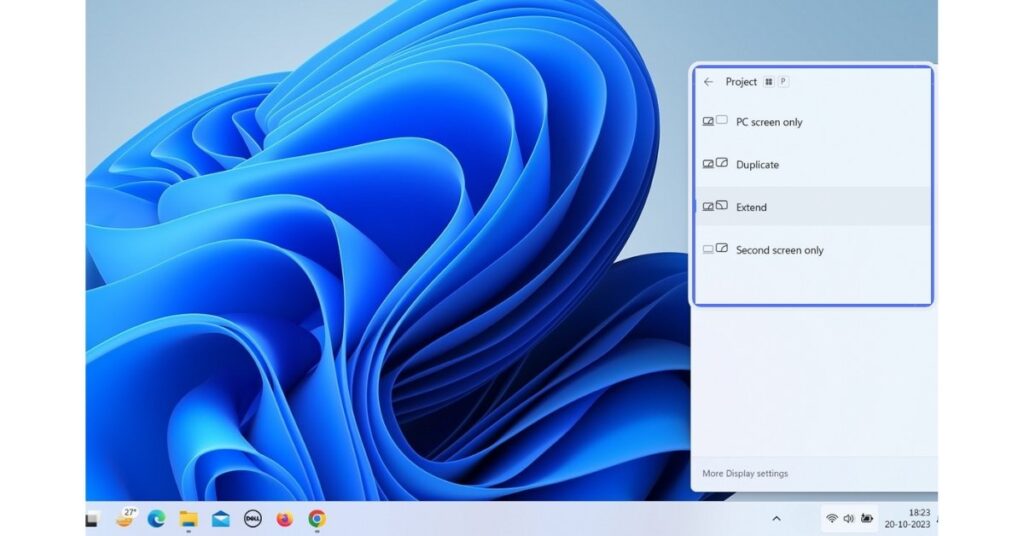
To connect your screen to a projector, connect to external monitors, or broadcast to a wireless display, press Windows Key + P in Windows 10 or 11 and select those options When you reach the display menu you can choose to duplicate your screen (making an exact copy) or extend it in the middle in order to have a second desktop.
F2: Rename Files
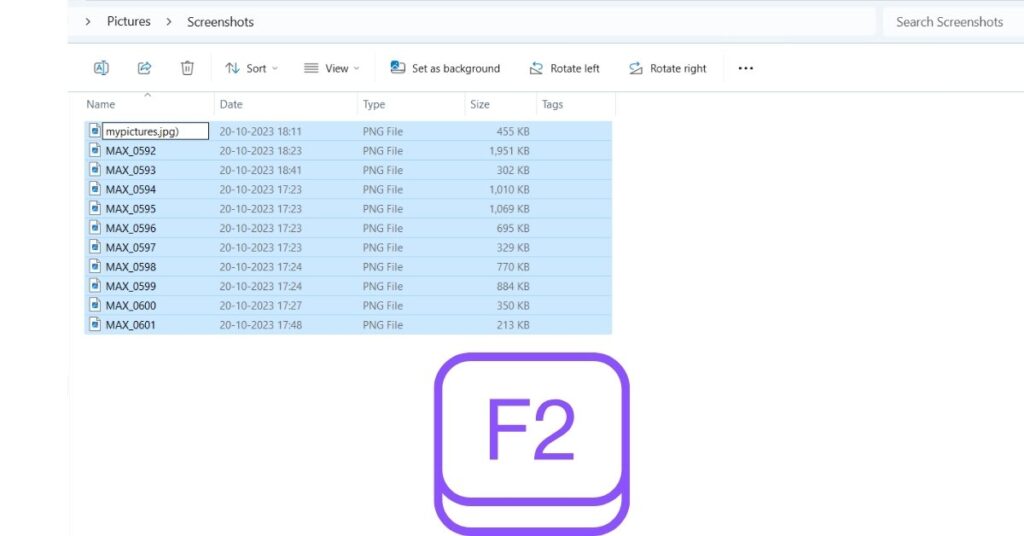
There are many reasons why you will have to need to rename a file through laptop shortcut keys. This is probably an image with a non-descriptive file name like MAX_0591.jpg. Whatever the reason, the quickest and easiest way to rename a file is to select it in Windows Explorer and press the F2 key. You can also name multiple files at the same time. Just highlight all the files you want to name (Shift + click allows you to highlight multiple files at once), press F2, type in a new name, and press Enter. All files will have the same alias with a number added in parens (ex: mypictures.jpg).
Windows key + I: Open Settings
Use this keyboard shortcut to open the Settings screen whenever you want to change how Windows behaves. In Windows 11, you can press Win+A to go directly to the Quick Settings panel.
On Windows 10, pressing Win+A brings up the Action Center screen, which provides quick access to certain settings and displays notifications.
Also Read: Laptop Keyboard Not Working? Here’s How To Fix It In No Time
CTRL + D: Bookmark a Webpage
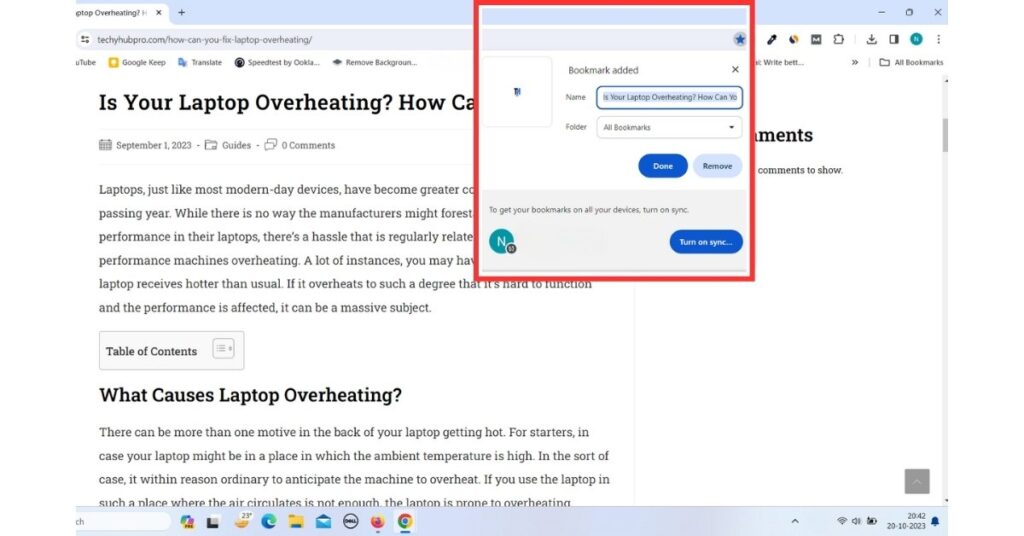
If you like what you’re reading in any of the three main browsers and want to bookmark it, you don’t need to click the star or choose an option from the preferences menu. Press CTRL+D in Chrome, Firefox, Edge, or Internet Explorer Up will allow you to bookmark the current page, edit the icon name as well, and choose the save folder.
CTRL + Shift + B / O: Show Bookmarks Menu
Once you’ve bookmarked your favorite article in Chrome, finding that bookmark isn’t as easy as it should be. Pressing CTRL + Shift + O will automatically display the full-screen bookmark menu in Chrome. Press CTRL + Shift + B to display the bookmarks bar in Chrome, IE, or Firefox. If you use multiple bookmarks.
Windows Key + L: Lock your Laptop
The “Windows + L” keyboard shortcut is an easy way to quickly lock your laptop. Even if you’re far away from your laptop at work or home, there’s no reason not to lock it. All you have to do is press Windows Key + L.
CTRL + SHIFT + T: Restore Closed Browser Tab
Sometimes you find yourself with way too many tabs open in the browser and start closing them, pressing CTRL + W like wild just to clean up your messy laptop. Then you realize you just closed the tab with your main open and important Gmail or the important references you need to complete your report. To restore the last tab you closed, simply press CTRL + SHIFT + T in any of the major Windows web browsers (Chrome, Firefox, Edge, Internet Explorer).
Also Read: Want to Enable On-Screen Keyboard Display? Here Are 6 Ways
Alt + F4: Close Windows App
Most people close programs by rolling the mouse pointer to the top right corner of their window and pressing the X button. But that’s a lot of lunging and swiping, especially if you want to close multiple programs at once. ALT + F4 will close programs in Windows 10, 11. CTRL + W closes desktop applications only (not Windows store apps).
Windows Key + Arrow: Windows Snap
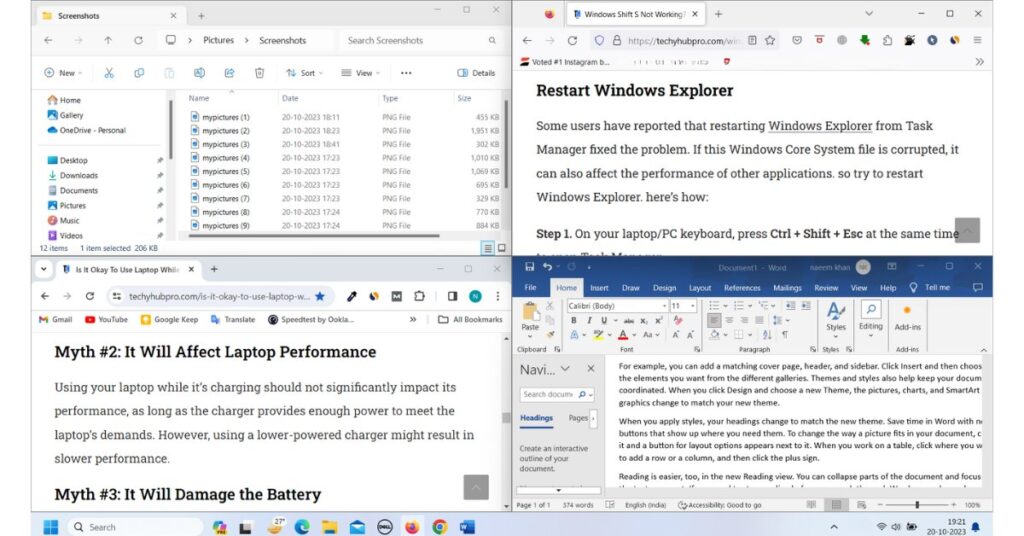
One of the best features of Windows is the ability to crop windows next to each other. so you can evenly divide the screen between two and four applications. To do this snap feature with a mouse you have to drag a window to both the left and right side of the screen if you want it to take up half or in the corner if you want it to take up a quarter of the space.
Don’t bother. Press Windows + Left Arrow to move the window to the left of the screen or Windows + Right Arrow to move it to the right. If you want your application to take up a quarter of the screen, swipe left or right and press Windows + Up Arrow or Windows + Down Arrow to move to the corner. Also, If you have more than one screen you can press the key combination more than once to take it moving from one screen to another is possible, allowing you to have eight snapped windows on two displays (or twelve on a three-display configuration). If a window is not snapped, hitting Windows + Up Arrow maximizes it while Window + Down Arrow minimizes it.
Also Read: How to Rotate Laptop Screen: Simple And Easy Ways
CTRL + A: Select all Items
To select all the elements in a window, whether it’s a document, an image in a graphic editor, a folder full of files, or even a web page, you don’t have to hold down your mouse button and scroll down to the confirmation screen. Just press CTRL + A and you can select anything in one stroke. You can then copy, paste, or even apply the formatting.
Shift + Arrow: Highlight Text

With today’s legion of jumpy, imprecise clickpads, it often takes minimal effort to simply select the text you want. It isn’t much faster or more convenient to use your finger on a touchscreen laptop. To highlight text with your laptop keyboard, simply hold down the Shift key while moving the cursor with the arrow keys. When you also hold down CTRL, pressing any arrow allows you to highlight entire words instead of highlighting individual letters.
Also Read: Is Your Laptop Touchpad Not Working? Here Are 10 Fixes
ALT + Left Arrow: Move Forward or Back in Web Browser
Most of us probably click the back button of our web browsers a dozen or more times a day. You don’t have to lunge toward the arrow button every time you want to go back to the previous page. Just press ALT + Left Arrow instead. Pressing ALT + Right Arrow moves you forward.
Ctrl + J: Open the Browser’s Downloads Folder

It can be too easy to lose documents downloaded from the web, which can lead to a lot of frustration. Usually, the documentation will be in the browser’s downloads file, and then you have to open it to see the documentation. Unfortunately, opening this file requires finding the right menu, which can be cumbersome.
Another option is for laptop shortcut keys to press Ctrl + J, and the browser’s download folder will open automatically. Of course, you still need to find the right files and open them, but at least the task has been simplified somewhat.
Windows Key + M: Minimize all Windows
No matter how Windows develops, no matter how many library folders it has, we find ourselves storing files on the desktop. If you have multiple windows open, it’s impossible to see or click all the files and shortcuts you’ve dropped on your wallpaper. Pressing Windows Key + M minimizes all your windows so you can see everything you have on your desktop.
Also Read: Is Your Laptop Overheating? How Can You Fix It?
CTRL + Click / Shift + Click: Select Multiple Items
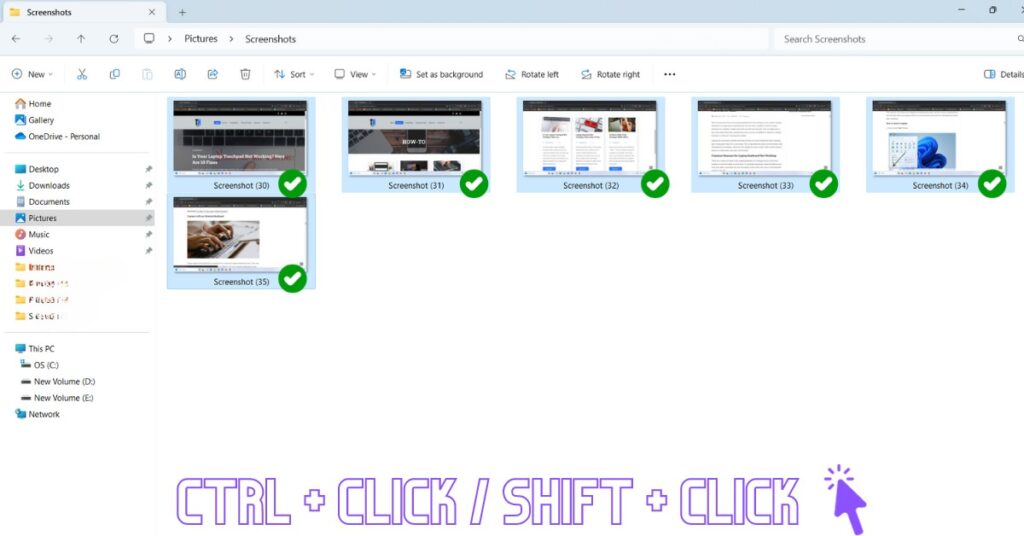
Whether you select rows in an Excel spreadsheet, blocks of text in Word, or files in File Explorer, you want to highlight a number of different things. If lack time — 10 to 30 lines on a worksheet, for example — you can simply click Shift first, hold down the Shift key, and then click one last one. Also, if you want to select two or more objects that are not adjacent to each other at the same time, you must hold down the CTRL and click on all the objects you want. (If you click without pressing CTRL, all previous selections are lost.)
Windows + Shift + S: Screenshot Capture
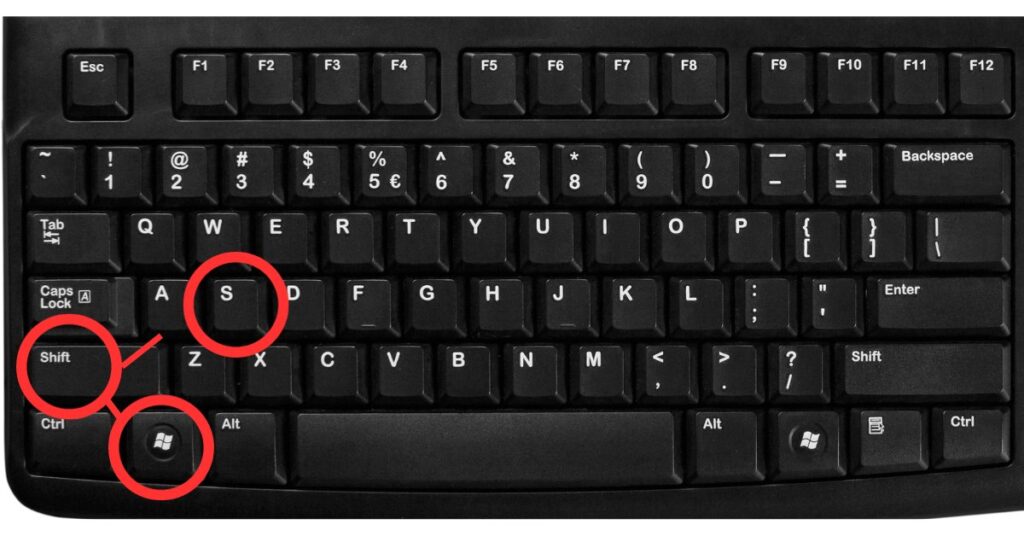
So, you know how on your laptop, you can take pictures of the stuff you see on the screen, like photos or text? Well, there’s this cool trick you can use. It’s like a secret handshake for your laptop. You press the Windows + Shift + S. When you do that, your laptop will let you choose what part of the screen you want to take a picture of. It’s like a window that opens up, and you can pick the area you want to capture. Once you’ve chosen, your laptop takes the picture and keeps it ready for you.
This trick is super handy if you need to save something you see on your laptop quickly, like text or pictures. It’s great for making documents, sharing info, or saving important pictures for later. It’s like having a special camera for your laptop
Also Read: Windows Shift S Not Working? HERE ARE 9 Ways To Fix It
CTRL + Shift + V: Paste as Plain Text
It happens from time to time. You compose an email or edit an online document in your browser, and decide to grab some text from a web page or Word doc. You highlight, copy, and paste text, and you see all kinds of weird characters and unwanted formatting in your destination document. Fortunately, Chrome and Firefox have a simple solution: press CTRL + Shift + V and the contents of your clipboard will be loaded into your browser as plain text.
Final Words
Hope, You might have liked this article. Laptop Shortcut Keys can be a powerful tool to increase productivity and save time when using a laptop. If you are creative use the essential Windows laptop keyboard shortcuts listed above. you can be far more productive and get more done in less time.


